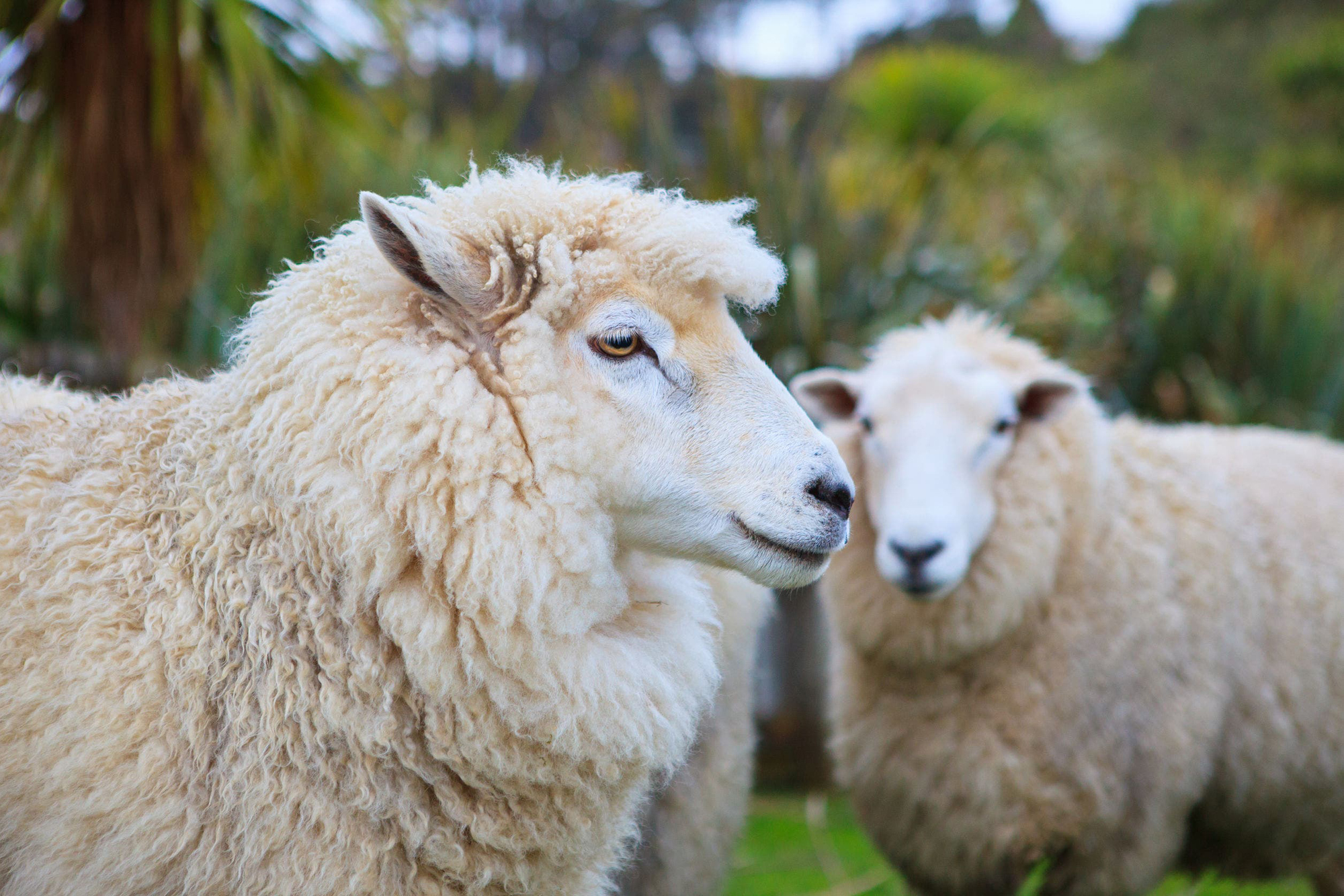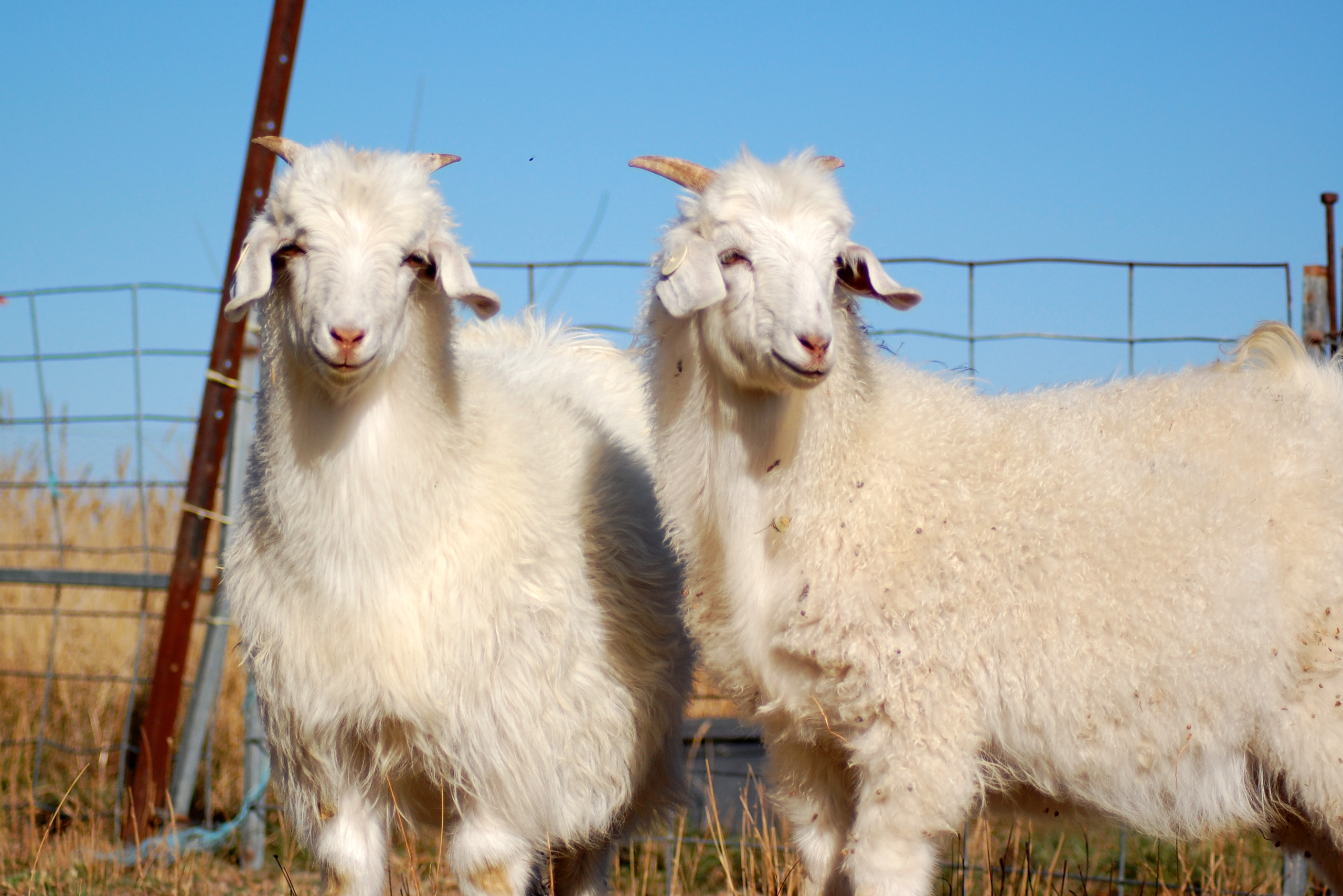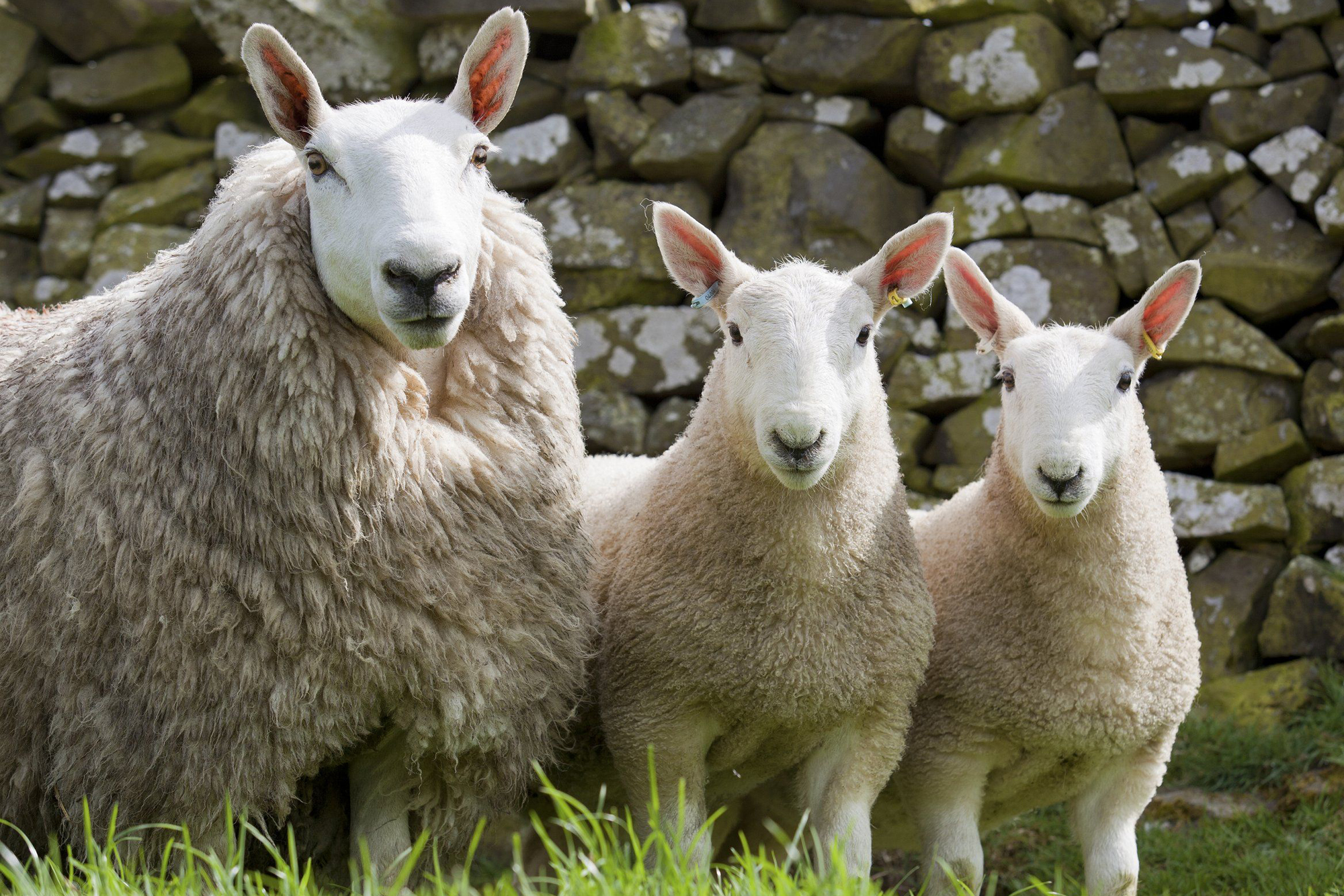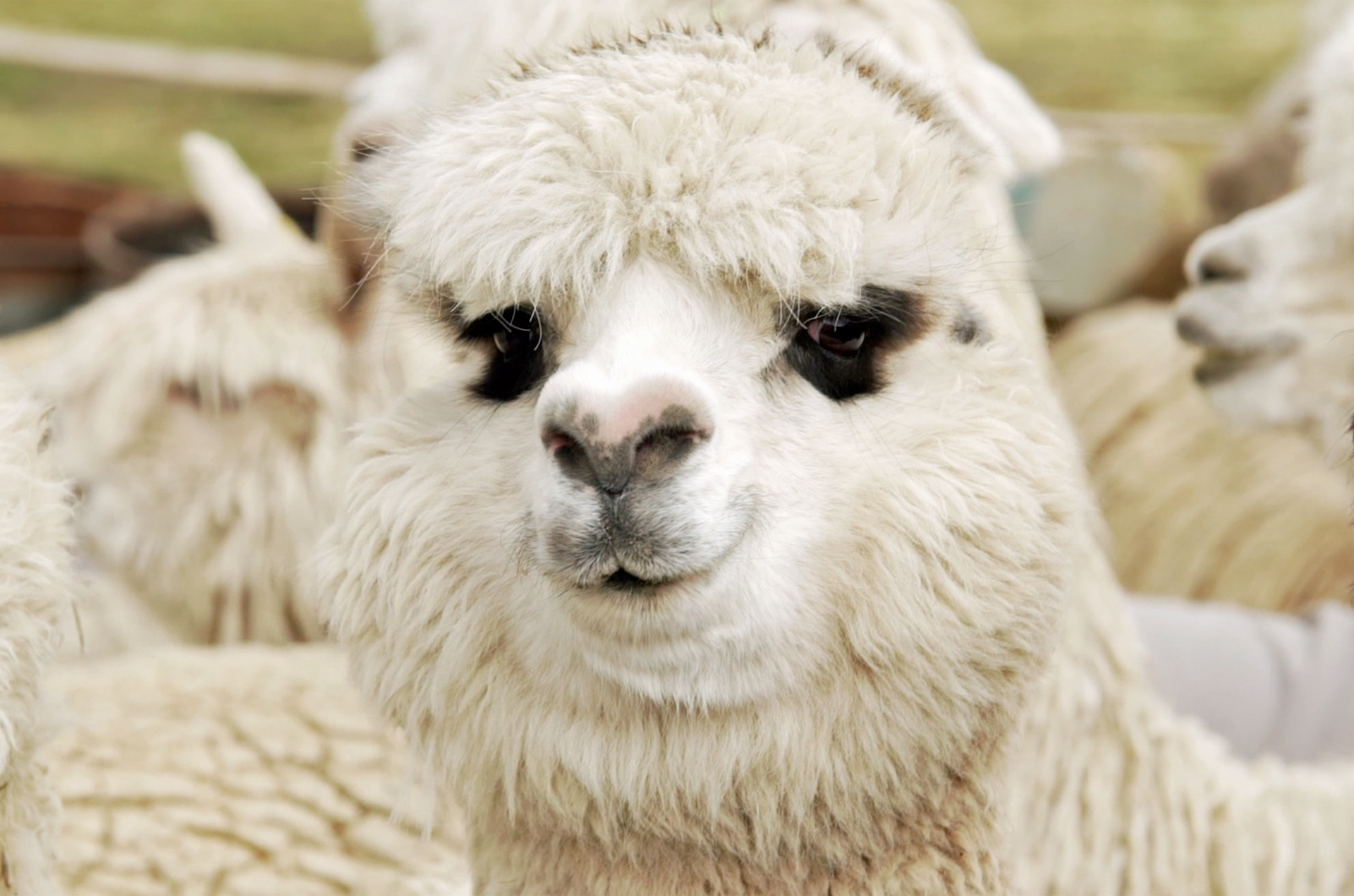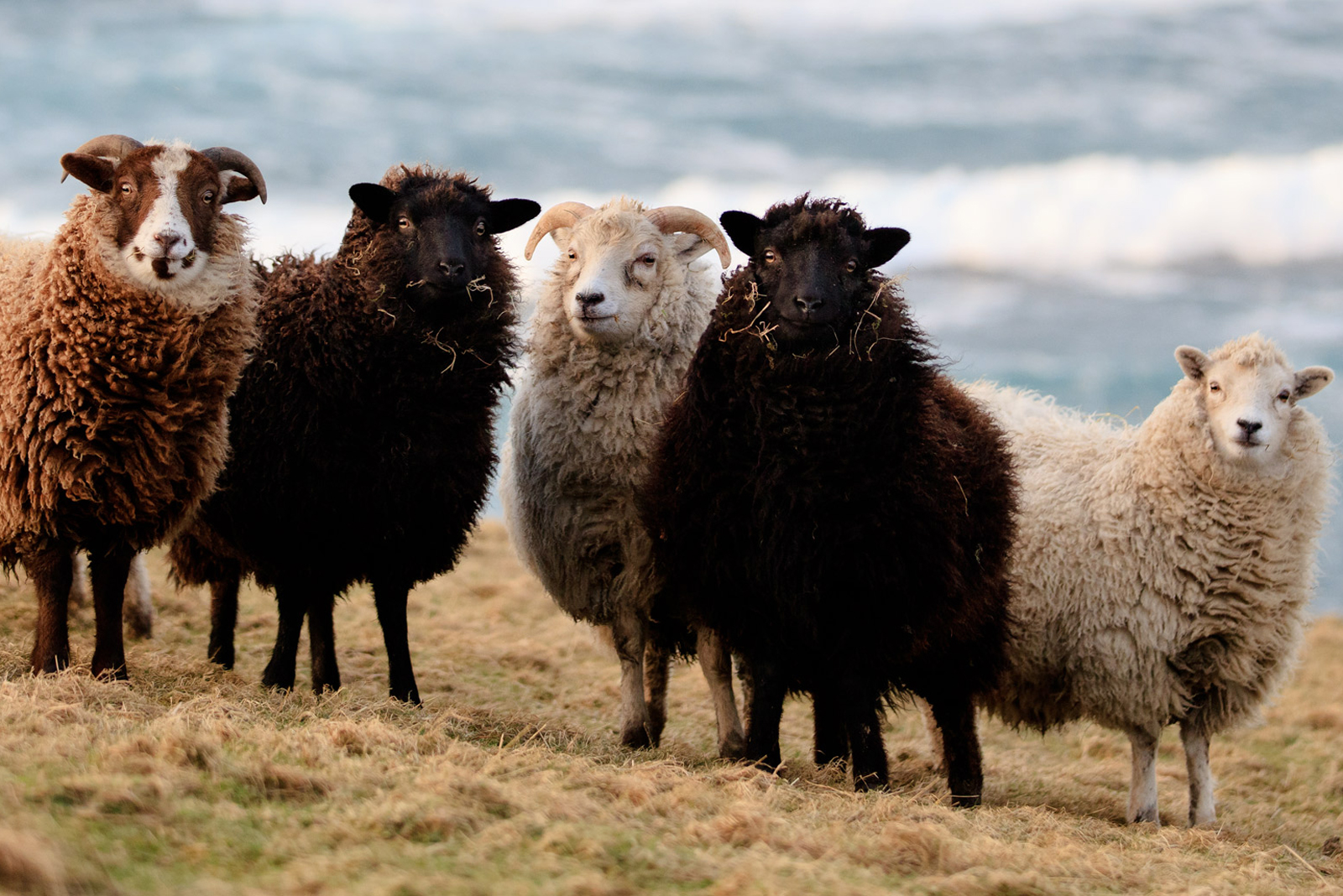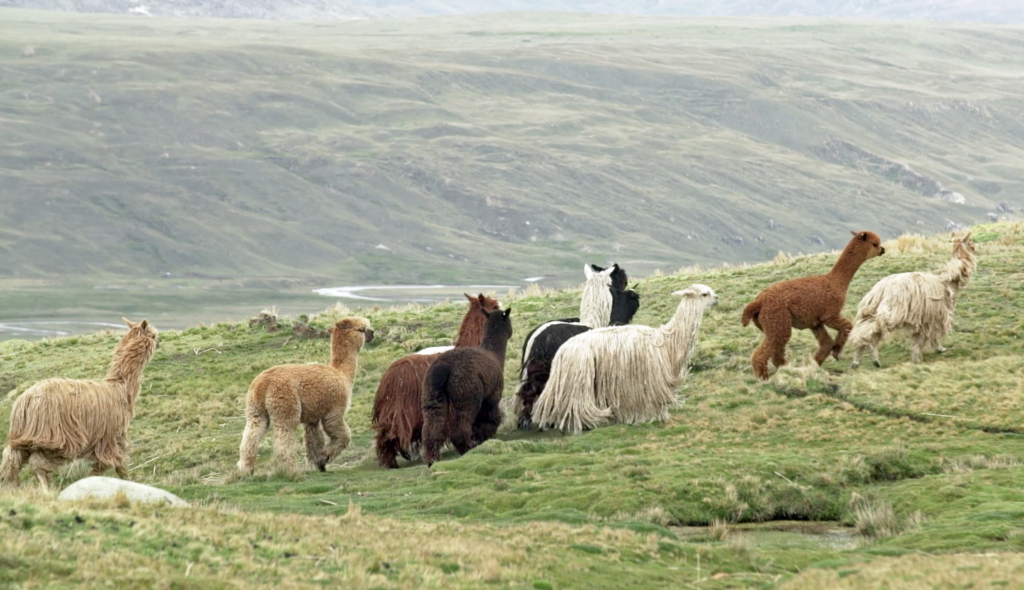Sheep wool (Merino)
Recommendation
Win-Win Textiles recommends the use of naturally renewable and biodegradable wool fibres, especially when grown organically or recycled. Historically, wool is considered to be one of the first fibres used by humans for textiles. It is an animal-based natural fibre, primarily derived from sheep with different grades of fibre coming from different breeds. These include fine wools such as Merino to coarser wools from Shetland sheep. Finer wool is predominantly used in garments, whilst the coarser grades are used mostly in outerwear or rugs and carpets.
Although wool is produced in a variety of countries, China (416,824 tonnes greasy wool) and Australia (385,945 tonnes greasy wool) were the largest global producers in 2018, followed by New Zealand (127,935 tonnes greasy wool), the United Kingdom (70,738 tonnes greasy wool) and Turkey (64,317). Other key farming regions include Morocco, Russia, Iran, India and South Africa.
As a natural fibre, it is assumed that wool has high sustainability credentials, yet it is associated with a number of impacts, including animal welfare issues linked with its farming practices, land and water use. However, due to its length, wool fibres can easily be mechanically recycled, which has a lower environmental impact than conventional wool, as waste products become a raw material that would otherwise be sent to landfills or incinerated. Furthermore, wool may be eligible for USDA or European Commission organic certification if it is produced in the USA or EU, and producers of organic Merino wool products can apply for the Global Organic Textile Standard (GOTS) or the Organic Content Standard (OCS). Additionally, Textile Exchange developed the Responsible Wool Standard, a voluntary standard specifically focusing on the welfare of sheep and the land they graze on, based on the Five Freedoms of animal welfare. There are also standards for specific regions or from companies such as: the ZQ Standard by the New Zealand Merino Company, the NewMerino Standard from NewMerino, the Athen2co by the Schneider Group or Sustainawool by the Australian Wool Exchange Ltd. These standards, however, are not necessarily third party verified or focus exclusively on one region.
The Sustainable Development Goals
When changing to more sustainable sheep wool concepts, brands will be contributing to the SDGs:
Production
Conventional wool:
Sheep are mostly shorn once a year, but can be shorn up to three times a year, depending on the breed and region of production. Once sheep are shorn, the wool is graded and sorted according to its quality.
- It is then scoured (washed) to remove dirt and grease (lanolin) using alkali detergents and carbonised using an acidic chemical process to remove natural impurities.
- The clean wool is then carded to detangle the fibres and combed to separate the fibre lengths.
- The fibre is then spun into yarn, which can be knitted or woven into fabric.
The quality of the fibre depends primarily on the breed of animal and the fibre length of its wool. For example, Merino and Cheviot sheep produce different staple lengths.
Preferred wool:
Textile Exchange defines wool as preferred wool when “it is grown with a progressive approach to land management, and from sheep that have been treated responsibly”. The Responsible Wool Standard (RWS) in alignment with the ISEAL Code of Good Practice aims to embed the Five Freedoms of animal welfare with land management best practices, traceability and trustworthy communication into one standard. This is an important step towards more sustainable wool sourcing and reliable on-product claims. The RWS provides a chain of custody system that enables the tracking of wool throughout the whole supply chain. The Five Freedoms outline five aspects of animal welfare under human control:
- Freedom from hunger or thirst – by ready access to fresh water and a diet to maintain full health and vigour.
- Freedom from discomfort – by providing an appropriate environment, including shelter and a comfortable resting area.
- Freedom from pain, injury or disease – by prevention or rapid diagnosis and treatment.
- Freedom to express (most) normal behaviour – by providing sufficient space, proper facilities
and company of the animal’s own kind. - Freedom from fear and distress – by ensuring conditions and treatment in order to avoid mental suffering.
In addition to wool certified with the RWS, both certified organic and certified recycled wool may be included as preferred wool.
Organic wool:
In order for wool to be certified organic in the US, it must be produced in accordance with federal standards for organic livestock production, which are:
- Feed, forage and bedding used for the sheep from the last third of gestation must be certified organic.
- Synthetic hormones and genetic engineering of the sheep is prohibited.
- The use of synthetic pesticides on pastureland is prohibited, and the sheep cannot be treated with parasiticides, which can be toxic to both the sheep and the people exposed to them.
- Good cultural and management practices of livestock must be used.
- All organic sheep must have year-round access to the outdoors.
- Mulesing, the practice of removing strips of wool-bearing skin from around sheep’s buttocks to prevent flystrike, is prohibited.
Recycled wool:
Recycled wool is most commonly derived from post-industrial waste, such as fibre waste from yarn production and fabric waste from the cuing room, and to a lesser extent from post-consumer wool garment waste. Post-consumer waste consists of any wool garment or textile that would otherwise end up in landfill or be incinerated.
Post-consumer and post-industrial waste can be recycled via mechanical recycling methods:
- Wool waste is first separated by colour and quality before the fabric is broken down into smaller pieces.
- Fibres are then detached and carded to clean and remix the varying lengths of wool fibres, allowing them to be re-spun into new yarns.
Due to the amount of processing, recycled wool fibres are often shorter in fibre length and not as hard wearing or strong as conventional wool. Recycled wool is therefore often integrated as a blend with conventional wool in outerwear, accessories and in felted products. Compared to cotton, wool has longer fibres to start with, making it very likely that recycled wool fibres are longer than their counterparts made from cotton, which leads to better strength and thinner yarn counts.
Market situation
Conventional wool:
The market share of wool has been declining in recent years since the uptake of cheaper synthetic alternatives, rising concerns about global warming and animal welfare issues related to wool. In 2018, just over 1 million mt of raw wool was produced for clothing and other textiles, which is almost half of the 1.93 million mt produced in 1990.
Nevertheless, it remains the most used animal derived fibre, easily available and offered by many suppliers, making integration straightforward. The majority of conventional wool is not certified, which makes its communication potential limited. Visibility within the wool supply chain can be limited. Tracing wool fibre will depend greatly on the level of visibility within the supply chain, as wool can be produced, mixed and processed in a number of differing global locations by multiple suppliers. Wool continues to be used extensively and is considered a premium fibre. Wool prices and demand are affected by the influence of trends in synthetic fibres such as acrylic, which directly competes with wool. Nevertheless, the price of wool is likely to remain comparably high in the foreseeable future – six times the price of cotton and seven times the price of synthetic fibres.
Preferred wool:
The market share of Responsible Wool Standard (RWS) certified wool is still estimated at below 1% of global wool production; however, more and more farms and processing sites are being certified since its launch in 2016, and continuous growth is foreseen. Major production countries for RWS certified wool in 2019 were South Africa, Uruguay, Argentina and Australia with a total of 745 farms in six countries.
Another preferred wool initiative is Ovis21, a network of more than 160 producers in Argentina, Chile and Uruguay, grounded in an effort to promote regenerative farming practices and biodiversity. Ovis21 is part of the Savory Global Network, which developed the Ecological Outcome Verification (EOVTM). To cover animal welfare as well, Ovis21 has adopted the RWS. Another example for preferred wool is ZQ by The New Zealand Merino Company Ltd., which supplied over 11,000 mt of ZQ certified wool fibre in 2018. This equaled around 1% of the global wool production in 2018. In New Zealand, ZQ is certified to the RWS as a farm group. California based organisation Fibershed focuses on regional fiber systems to build soil and protect the health of the biosphere. It is also the driver behind the Climate-BeneficialTM wool program, which aims to scale the adoption of Carbon Farming to create carbon sinks.
Organic wool:
Organic wool makes up less than 1% of global wool production and is still a niche fibre. However, as it is generally well known, organic wool is also fairly well established and slowly becoming more readily available in the marketplace. By now, only few suppliers are familiar with organic wool, and the level of certification and chain of custody requirements can make sourcing organic wool even more resource intensive. This is because it requires a detailed paperwork trail through each stage of the supply chain. Suppliers’ manufacturing processes and procedures will need to be certified. Organic wool product claims can be made where it is independently certified by the Global Organic Textile Standard (GOTS) or Organic Content Standard (OCS).
Even when considering its higher cost and the necessary investment in infrastructure, resources to track certifications and establish new sourcing channels, organic certification is relatively well known amongst consumers. Therefore, it offers a good means of communicating the positive environmental and sustainability credentials on a product. Wool certified by GOTS or OCS is traceable, meaning it is possible to know where the purchased wool comes from. This helps brands and retailers to guarantee they are not sourcing wool from countries where issues such as mulesing have been identified.
Recycled wool:
It is currently difficult to track global volumes of recycled wool, as much is uncertified and amounts are not reported. Recycled wool production is mostly found in China and Panipat in India. Within Europe, Prato in Tuscany, Italy has traditionally been a key sourcing region for recycled wool (app. 22,000 mt of wool is recycled every year), which has been rediscovered in recent years. Mechanically recycled wool is readily available in small volumes and widely used as a blend due to its low cost when not certified. With growing interest in recycling technologies, the ability to process wool production more effectively will inevitably improve quality and increase the volumes available.
The integration of recycled wool should be straightforward, particularly as a blend as it is easily available in small volumes. With increased availability and familiarity of recycled wool with suppliers, integration should become easier in the near future. Recycled content product claims can be made where it is independently certified to the Global Recycled Standard (GRS), Recycled Claim Standard (RCS) or SCS Recycled Claim and Cardato Recycled for recycled wool from Prato, Italy. Even when considering its higher cost and the necessary investment in infrastructure, resources to track certification and establish new sourcing channels, these standards help ensure recycled content claims are substantiated and offer a robust means of communicating the positive environmental and sustainability credentials on a product.
Recycled wool certified to GRS, RCS and RCC is traceable, meaning it is possible to know where the recycled wool was produced. This helps guarantee that brands and retailers are sourcing recycled materials. Uncertified recycled wool is reasonable in cost compared to conventional wool; however, when using certified recycled wool, its cost is increased to account for the paper-based tracking process needed to ensure the integrity of its content. With increased demand for recycled wool and advancements in recycling technology, the volumes of recycled wool available are likely to increase, which should in turn reduce its cost.
Sustainability considerations
Land used for grazing is mainly rain-fed, but wool’s estimated water usage varies greatly depending on regional circumstances due to the different grazing and animal husbandry practices. Wool also requires large amounts of water in the scouring process. As a result, wool’s global average water footprint is 6,598 m3 per tonne of fibre. Acrylic has a footprint which is 98% lower than wool, using an estimated 148 m3 per tonne for fibre production and processing. The scouring process is often heavily mechanised and relies on energy and chemicals. In addition, sheep release methane and nitrous oxide gases. These gases have a much greater effect on the climate and as a result, the carbon impact of this natural fibre is estimated to be 83% lower than acrylic. The wool scouring (cleaning) process requires strong alkali based detergents to remove natural greases (lanolin) from the wool fibre. If not treated adequately, waste water can be harmful to humans and the environment. Sheep require a considerable amount of grazing land and, therefore, the yield of fibre produced is relatively low compared to other natural fibres. However, often these grazing lands are not suitable for arable farming and do not compete with food crops. Sheep grazing has been known to contribute to soil erosion and a loss of local biodiversity. In some regions of the world, small holder farmers have poor working conditions and are vulnerable to fluctuating wool prices with limited bargaining power.
The main animal welfare concerns associated with wool production relate to flystrike prevention methods such as mulesing. This is where a large area of fleece and skin from around the rear of lambs is removed to reduce or prevent the likelihood of flystrike, causing considerable distress and suffering to lambs. Many companies have put policies in place to source non-mulesed, including non-clip mulesed wool. Due to the practice of mulesing in Australia, this has increased the sourcing wool from outside Australia or from Australian sources, which guarantee that mulesing with shears or clips has ceased. Standards such as the RWS requires wool fibre traceability back through the supply chain to confirm wool has not come from a mulesed source.
Few fibres have been so widely discussed within the sustainability scene as wool. On the one hand, it is a natural renewable fibre, which is biodegradable and has an excellent recyclability. Furthermore, wool has very little impact in the use phase of a fibre’s life cycle, as it does not need to be washed very often due to its natural self-cleansing properties. On the other hand, environmental issues related to sheep grazing, fecal matter of livestock as well as animal welfare issues such as breech mutilation and toxic sheep dipping practices are undeniable and have been on the agenda by many non-profit and animal welfare organisations. Therefore, it is extremely important to ensure that wool is sourced sustainably, based on the Five Freedoms of animal welfare and land management protecting soil health, biodiversity and native species.
Goat hair (Cashmere)
Recommendation
Win-Win Textiles recommends the use of naturally renewable and biodegradable Cashmere fibres, but also needs to mention that there are notable concerns over the impact on the environment, animal welfare and societies, especially in Mongolia, of Cashmere production, making it is extremely important to ensure it is produced sustainably.
Cashmere wool has long been considered a premium fibre. It is derived from the fleece of Kashmir goats and is characterised by its sok and extremely warm fibres. The name “Cashmere” comes from the Kashmir region in India, which is the area where the furry goats that supply the exclusive wool originated. The two main producers of raw Cashmere are China and Mongolia. Cashmere is also produced in Afghanistan and Iran with small amounts also produced in countries such as Kazakhstan, Kyrgyzstan, Pakistan and Turkey. However, due to its length, Cashmere fibres can easily be mechanically recycled, which has a lower environmental impact than conventional Cashmere as waste products become a raw material, which would otherwise be sent to landfill or incinerated. Furthermore, Cashmere may be eligible for USDA or European Commission organic certification if it is produced in the USA or EU, and producers of organic Cashmere wool products can apply for the Global Organic Textile Standard (GOTS) or the Organic Content Standard (OCS). Additionally, the TE just released the Responsible Mohair Standard (RMS) in March 2020, a voluntary standard specifically focusing on the welfare of Mohair goats and the land they graze on, based on the Five Freedoms of animal welfare.
Even though there is not yet a Responsible Cashmere Standard in development, Textile Exchange is now facilitating the Responsible Cashmere Round Table (RCRT) as a means to bring together the industry with the aim “to better understand the issues and opportunities surrounding Cashmere production, as well as to have a common voice in the development of a market-based solution”. Additionally, two dozen global brands have signed a statement of support for the establishment of the Mongolia Sustainable Cashmere Platform (MSCP), a national-level umbrella mechanism with collaborative leadership, facilitated by the United Nations Development Program (UNDP). The Platform has four key objectives in its two-year Collection Action Plan:
- to formulate and implement a collective action plan that addresses the root causes limiting the sustainability of Cashmere in Mongolia.
- to influence and harmonise government policy that ensures a strong and coherent legal and institutional framework for sustainable Cashmere in Mongolia.
- to establish partnerships and coordinated investments and actions that accelerate current efforts.
- to position Mongolia as a global leader for sustainable Cashmere.
The MSCP will map the work of the different initiatives supporting more sustainable Cashmere production in Mongolia. The initiatives include the Aid by Trade Foundation (AbTF) with its THE GOOD CASHMERE STANDARD®, the Agronomeset Vétérinaires Sans Frontiers (AVSF), the Green Gold Animal Health Project, the Sustainable Fiber Alliance (SFA) with its SFA Cashmere Standard, The Nature Conservancy (TNC), and the South Gobi project involving the Wildlife Conservation Society (WSC).
The Sustainable Development Goals
When changing to more sustainable goat hair concepts, brands will be contributing to the SDGs:
Production
The production of Cashmere wool varies depending on the region. However, there are a number of common practices:
- Depending on the geographical location, Cashmere fibres are collected by either combing, which generates a high yield of pure Cashmere, or shearing (typically Iran and Afghanistan) of the goat during the moulting season in spring, when goats naturally shed their winter coat. Shearing can result in higher coarse hair content and lower pure Cashmere yield than combed Cashmere fibre collection.
- Sorting and separation of coarse hair is done by hand. The resulting fibre is then washed (scoured) under strict pH and temperature conditions to remove dirt and excess grease (lanolin).
- Once scoured, the Cashmere fibre is then de-haired. This step mechanically combs and separates the course (outer guard fibre) and finer fibres and further removes impurities.
- The Cashmere is then ready to be spun into yarn for weaving or knitting.
Market situation
Whilst increased demand has caused growth in the Cashmere industry, low production yields means it is still considered to be a niche fibre. Around 3% (354 mt) of the approximately 10,450 mt of Cashmere produced in Mongolia in 2019 was “sustainable Cashmere”. Cashmere production has seen notable growth since its decline in 2009 following the financial crisis. This has made low grade Cashmere more affordable and increased availability. A shift in Cashmere processing from Europe to China has led to an increase in processor numbers in China from 10 in 1988 to 2,600 in 2014.
Due to increased global production and depending on the grade of fibre required, integration of low grade Cashmere should be relatively straightforward. However, higher grades of Cashmere are more difficult to source and integrate. The recent high demand for Cashmere has led to a proliferation of low-quality fibres (longer, but coarser and less soft). Cashmere is commonly graded by the diameter of the fibre and properties such as length or strength. Cashmere is not a protected trademark, and therefore what is marketed as Cashmere could derive from other animals than the Cashmere goat. Cashmere is not certified, therefore on-product claims are limited. Visibility within the Cashmere supply chain is limited, and tracing Cashmere fibre will depend greatly on the level of visibility within the supply chain, as Cashmere can be produced, mixed and processed in a number of differing global locations by multiple suppliers. Cashmere is considered a premium fibre as Cashmere goats can only produce around 150 grams of wool per year.
Even with a rapid rise in demand and increased Chinese production of low grade fibre, the price of Cashmere has continued to rise in recent years. High grade Cashmere continues to demand a significant price premium in luxury markets. As a consequence, there can be a price variance of up to 20% between fibre grades. Even though Cashmere may be produced organically or recycled and can even be certified, availability is so limited that there is currently no further data available on the market situation of organic or recycled Cashmere.
Sustainability considerations
Land used for grazing is mainly rain-fed. Cashmere’s water usage varies depending on different regional grazing and animal husbandry practices. The production of Cashmere uses notable amounts of water, particularly in the scouring stage, which cleans the Cashmere fibre. Whilst there are no specific figures detailing Cashmere’s water footprint, its water usage can be considered to be more in line with other animal derived fibres such as wool.
The scouring and de-hairing process of Cashmere fibres is often heavily mechanised and relies on energy and chemicals. In addition, the goats themselves release methane and nitrous oxide gases. Similar to conventional wool, this will significantly increase the carbon impact of Cashmere fibres. Although derived from a different animal, Cashmere’s impact can be considered to be broadly in line with that of other animal derived fibres such as wool. The scouring process requires the use of strong alkali based detergents to remove the natural greases from Cashmere fibre. If not treated adequately, waste water can be harmful to humans and to the environment.
Degradation of pasture due to over-grazing is a key concern. The increased size and expansion of Kashmir goat herds have been known to cause damage to the ecosystem of the fragile plains of Tibet, Mongolia and northern India. These rural regions are, however, not suitable for growing food crops. In some regions of the world, small holder farmers have poor working conditions in rural, harsh environments and are vulnerable to fluctuating Cashmere prices with limited bargaining power. As an animal derived fibre, the main animal welfare concerns associated with Cashmere production relate to the farming conditions and animal husbandry practices of Cashmere farmers.
Alpaca Fibres
Recommendation
Win-Win Textiles recommends the use of Alpaca hair in garment production above wool and other animal hair. Alpaca has unique properties, which create a better wearing comfort, uses less chemicals in the processing, has less influence on biodiversity, is more efficient and offers a large range of natural shades, which can reduce the need of dyeing the fibres.
Further, we recommend to be attentive to the RAS 1.0, Responsible Alpaca Standard, which was released in April 2021, and to focus on using vendors, who work within this standard.
The Sustainable Development Goals
When using Alpaca fibres in garment product instead of other animal fibres and wool, brands will contribute to the following SDGs to a higher extent, especially when sourcing under the coming RAS standard:
Production
Alpaca hair comes from two breeds, the Huacaya (95% of the population) and the Suri (5% of the population). The Huacaya fibre grows perpendicularly to the body. It has density, softness, lustre and curls with a spongy appearance. The Suri fibre grows parallel to the body, with curls all around them, like fringes, it has a silkier and shinier appearance.
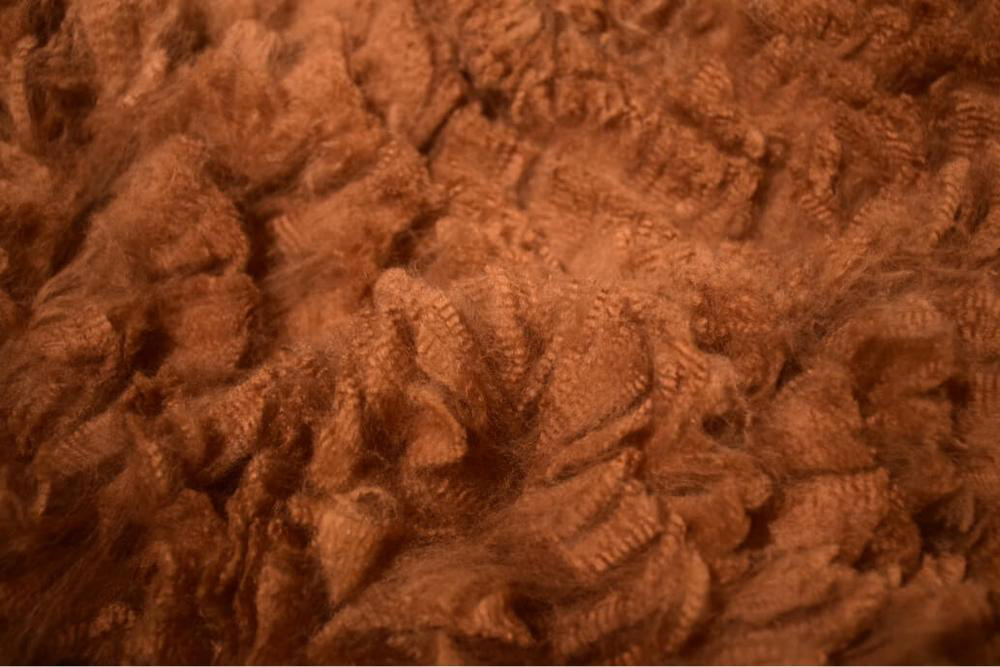
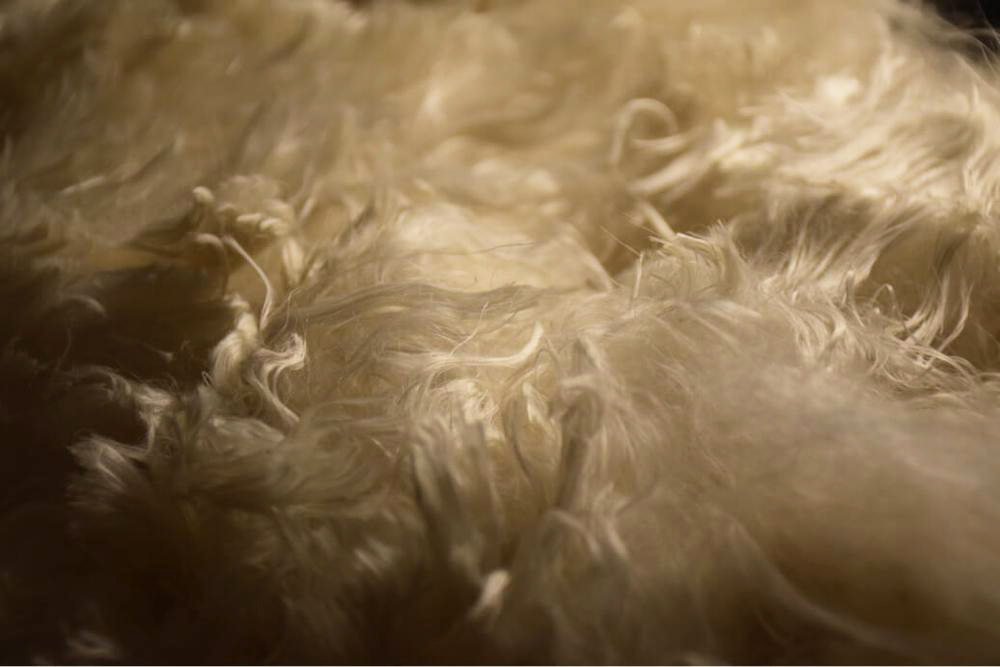
The Alpaca is bred in up to 22 natural shades and through blends Win-Win Textiles offers up to 40 natural Alpaca shades, which we can process without dyeing. When dyeing, our producers mostly take the closest natural colour and add less dye stuff to reach the final colour standard desired.
One Alpaca fleece contains multiple fibre diameters, which are graded as:
- Royal: <18 microns
- Baby/Superfine: <19 microns
- Fine: <25 microns
- Medium: <30 microns
- Strong: >30 microns
- Mixed: >32 microns
The fibre diameter increases slightly each time the Alpaca is shorn, and therefore the finest qualities come from the younger animals. The premium grades come from the back area of the animal, and it is important to note that baby Alpaca does not come from the baby animal, but is based on the micron grade as listed above. Royal, baby and fine are used for garments.
Alpaca is a unique fibre in the sense that it has a higher level of fibre core hollowness as compared to wool, and it therefore creates a greater thermal capacity. The tensile strength is around 50 N/ktex, which is 40% more than wool, and the single fibre length is 7% higher than wool. Furthermore, the Alpaca fibre has natural hydrophobic and hydrophilic properties with a water retention rate of 8%, compared to 16-20% for wool. Alpaca is less itchy and less prone to pilling than other animal fibres.
The Alpaca fibre is hypoallergenic, being lanolin free, and does not require harsh chemical baths and in the scouring phase as wool. This often leads to a higher yield of end-product by weight. The fibre can be processed both in worsted and woollen methods and be woven, knitted and felted.
- Shearing takes place once per year, and already at farm level, the sorting is done by hand classification into micron categories, which with modern methods is made easier by shearing the entire fleece in one piece.
- Then fibres are opened to remove sand and plant matter. Scouring is done by washing in gentle detergent and rinsing baths, followed by drying and lubrication.
- The scoured fibres are gently carded to detangle them and then combed to parallelise the fibres before they are blended and spun into yarn.
Market situation
Most Alpaca fibres are produced in Peru, where the majority (71.7%) of the 6+ million worldwide Alpaca population also lives, predominantly at small farms with herds averaging 50 animals. The world market for Alpaca reached 6,380 tonnes of fibre in 2018. Besides Peru, the main Alpaca populations are in Bolivia (8.6%), Australia (8.2%), USA (5.8%) and the EU (2.5%). Australia has announced a goal of reaching a 1 million Alpaca population in the near future – up from the current amorist 0.5 million. China has after a 10-year research project declared that they will create a population of 6 million Alpacas (having an estimate 12.000 Alpacas in 2018). Other producers such as the UK, Germany, New Zealand and South Africa have also announced plans to grow their Alpaca populations.
The Peruvian exports of Alpaca products reached 180 million USD in 2018, which was a 23.7% increase from 2017, and the 7 previous years the average annual increase was of 10%. 41.3% of the export value consists of combed and carded fibre, 30.6% of yarn, 16.8% of finished clothing and scarves, 5.9% of blankets, 1.5% of raw unprocessed fibre, 1.4% of textiles and the remaining 2.5% consists of carpets and low quality fibre.
The main countries importing Peruvian Alpaca products are China (24.1%), Italy (18.9%), USA (8.8%), UK (3.6%) Germany (3.5%), South Korea (3.2%), Japan (3.1%) and Australia (1.8%).
The Alpaca species is declared a Genetic Resource of Peru by law and is part of the Peruvian cultural identity, celebrated yearly on the National Alpaca Day on August 1st. The production is concentrated in the highlands at =>3800 mts above sea level.
Sustainability considerations
There are similar sustainability considerations for Alpaca as for animals providing wool and other hair for garment production. However, the Alpaca is considered more sustainable, leaving less impact during their lives and the fibre needing less chemical processing.
Alpacas can naturally withstand temperatures ranging from -20°C to 30°C within a day and in the altitude, where they live, there is a limited variety of flora and fauna resulting in a low protein/high fibre diet mostly consisting of grass. In their ancient habitat, the water supply is natural, and the land is generally not suitable for agriculture.
The efficiency of the Alpaca is higher than most other fibre-producing livestock as they require much less food intake. For instance, 1 kg of Cashmere fibre requires twice the amount of dry grass than the Alpaca fibre. One of the main objectives when working to improve the lives of the Alpaca is to secure sufficient nutrition, especially to pregnant females. When eating, they cut the top grass with their teeth as opposed to tearing out blades and root systems, thus affecting the biodiversity less than other animals providing fibre for garment production. Furthermore, Alpacas do not have hooves, but soft padded legs, not affecting the soil as much.
Currently, there is no organic Alpaca available; however, Textile Exchange has started work to complete the RAS 1.0 (Responsible Alpaca Standard) during 2021. The vendors of Win-Win Textiles are the two largest Alpaca producers in the world, and they have contributed to the initial ground work and hearings to establish the standard. We expect they will be among the first to be approved and apply the standard. The RAS is built on the same principles as the RWS (Responsible Wool Standard) and the RMS (Responsible Mohair Standard) and will adapt the same principles of embedding the Five Freedoms of animal welfare with land management best practices, traceability and trustworthy communication into one standard. Animal experts participate in the creation of the standard and will apply measures in line with the special and unique needs of the Alpacas in relation to the countries where they are bred.
We supply products made under the Pacomarca project in Peru, which is a modern program of genetic improvement as well as an improvement in breeding practises, animal welfare and the quality level of the fibre. This has resulted in the creation of a refined animal based on an unusual amount of data collection and registration of the Alpaca herds and the farmers participating in the project. A detailed registration of the consanguinity of millions of Alpacas has created the largest Alpaca database in the world and helped produce better fibres, increasing the hair fineness by 5 microns, improving the breeding of Alpacas also with increased probability of certain hair colours, bringing back the black Alpaca in higher numbers. The Alpaca fibre under the Pacomarca project are fully traceable from farm to finished product.
The new breeding and shearing methods developed has increased animal welfare and were easily transferable to small breeders, which has made sorting of fibres easier, has cut out scrupulous middle-men and increased the business and livelihood of the families depending on the Alpaca industry.
Please take time to watch the Pacomarca video below in order to gain insight on the work being done to improve conditions and results in the regions of Peru.
It is Win-Win Textiles’ ambition to continue to offer the best Alpaca products that the industry can offer and produce under the most secure and respectful conditions. We only work with vendors, where the animals are well managed in a way that promotes good health and prevents disease. Sick or injured animals are treated and operations are carried out in a way that minimises pain and distress.
Once the RAS 1.0 is released and producers start to become approved, Win-Win Textiles will only work with vendors under the standard.

